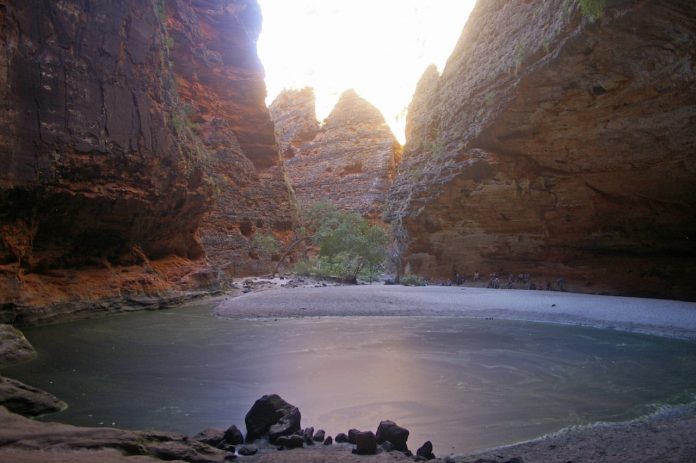“It’s not the Bungle Bungles,” said Steven, his vowels marking him as another Kiwi supporting the tourist industry here in the East Kimberley. “It’s the Bungle Bungle Range, or just the Bungles.”
Well, good luck changing that!
No one knows how this extraordinary domed rock formation got its name; possibly bundle-bundle, a Kimberley grass. Well known by Aboriginal people for millennia, it took a chance remark to a visiting TV crew in 1983 to introduce Australians, and the world, to these orange and black-banded beehives of rock, now a much publicised icon of Western Australia.
The range was incorporated within Purnululu National Park in 1987, which became a World Heritage Site in 2003.
Purnululu (sandstone in Kija language) is a tourist magnet; a must-see for visitors to the East Kimberley. Intrepid 4WD drivers pull off the North West Highway past Halls Creek through Mabel Downs station. Others take in the sights from a round flight from Kununurra 300km north.
We opted for the added experience of an overnight stay at a (luxury) bush camp. Excitement soars as the ten-seat Cessna flies over grassy Lissadell and rocky Texas Downs cattle stations. The first sight of the Bungles is astonishing. The pilot’s commentary piques interest. But as with most sightseeing, it’s best up close and personal. I’m here for two days of exploring.
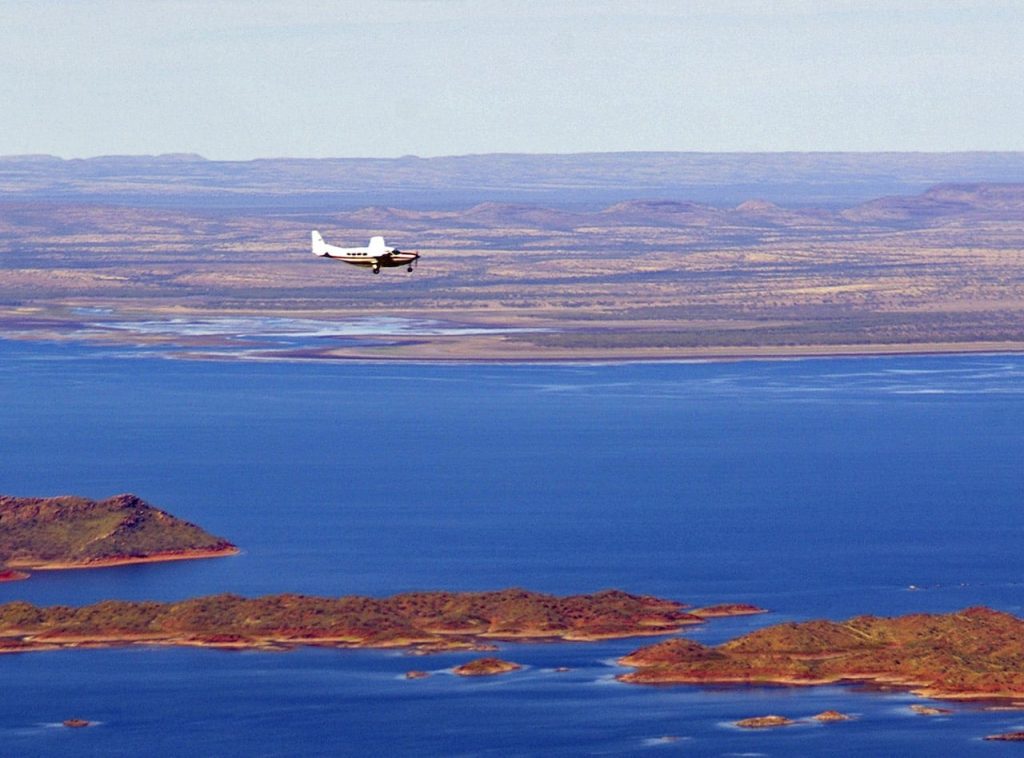
After 90 minutes of low-altitude flying filled with frantic photographing we’re on the ground at the tiny airstrip of Bellburn, south of the range. Tour guide Bruce is on hand to welcome us aboard his 4WD bus. An unexpected itinerary change means a rush along the western escarpment to the range’s northern tip for two gorge walks before the light fades – leaving a slow start for tomorrow’s adventures.
Mini Palms Gorge is an easy-to-hard 5km return walk with parts of its soaring sides glowing orangey-red in slanting sunlight. The lack of light causing these Livistona palms to become mini palms. The trees survive by sticking to the sheer rock face, while splaying their roots for sustenance. The walk ends at a high platform with backward views of our trek and no-go space beyond.
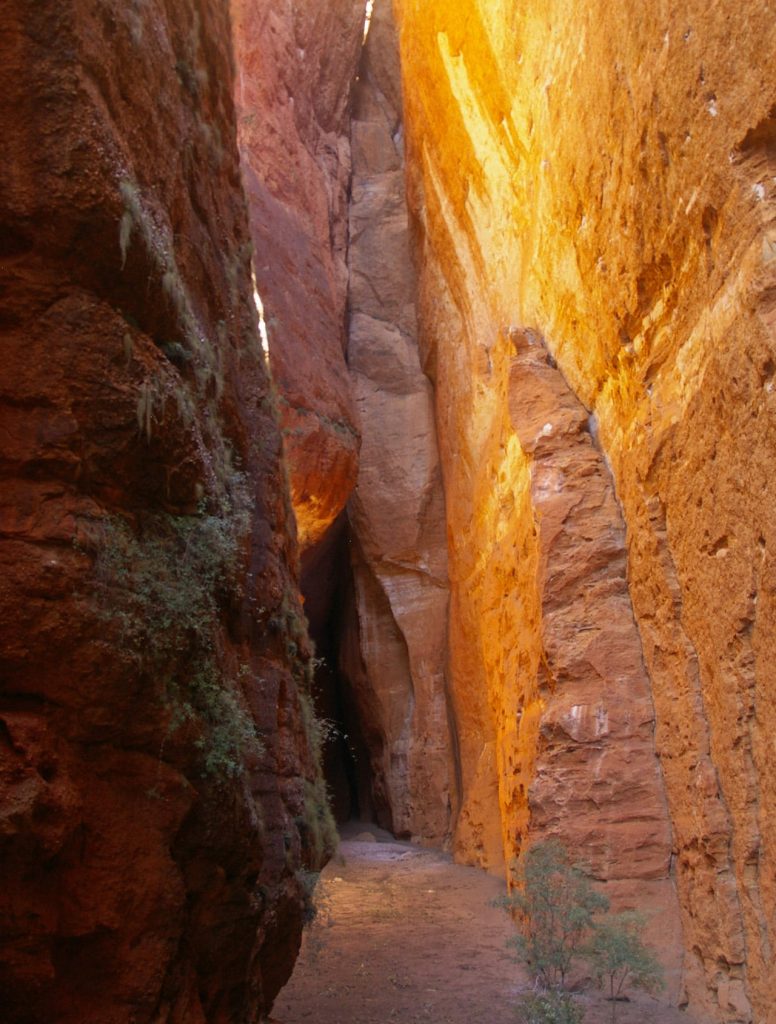
“It’s not really sacred”, Bruce grumbles.
A little farther north is shorter Echidna Chasm. We enter rock-hopping – hands and feet – as the chasm lives up to its name, narrowing into squeeze-through gaps separating perpendicular sides soaring 200m. Large boulders are wedged overhead. It’s somewhat claustrophobic, yet rewarding with some open areas, cul de sacs, grand sweeps and gobs of conglomerate rock. There’s only one way out and we take it; inside dusk turns into outside day, that is now turning into dusk.
The bus returns along the 30km-long western escarpment racing the sunset. I marvel at nature’s palette from gold, orange to mauve. It’s dark as the bus bumps into the bush camp alongside the wide Bellburn Creek bed. I join other guests on the decking awaiting the dinner gong. Someone pokes the fire in the large metal pot; instantly flickering sparks join a host of stars. The guffaws of tipsy travellers fade as my thoughts turn to the little-known war waged near here.
Jandamurra, an Aboriginal man, known as Pigeon to whites, was a skilled horseman, marksman and much-valued police tracker. His good mate, unusually, was an Englishman, named Richardson. Jandamurra was forced by his tribe to choose between settlers and the Bunuba culture. He killed Richardson and spectacularly sealed his fate, immediately becoming a legendary resistance fighter for his people.
For three years as a ‘magical immortal’ he led an armed guerilla insurgency against settlers and police. Cruelly betrayed, Jandamurra was shot dead in 1897, his head cut off as a trophy for a disbelieving and outraged colony. He was 23.
The Bungles are a crab-shaped range in a deeply dissected massif from the Devonian Period 360 million years in the making through geological uplifts, the odd meteor and water erosion. On everyone’s lips is how are these odd striped shapes formed? First, sand blown from the Tanami Desert formed sand dunes, then successive deposits of gravel created a seven km-high sandstone plateau. Twenty million years of erosion left remnants as beehive-shaped karst of great beauty and cultural significance. Why the stripe banding? The dry red layer is iron oxide while the moist dark layer contains blue-green algae that provides a protective coating.
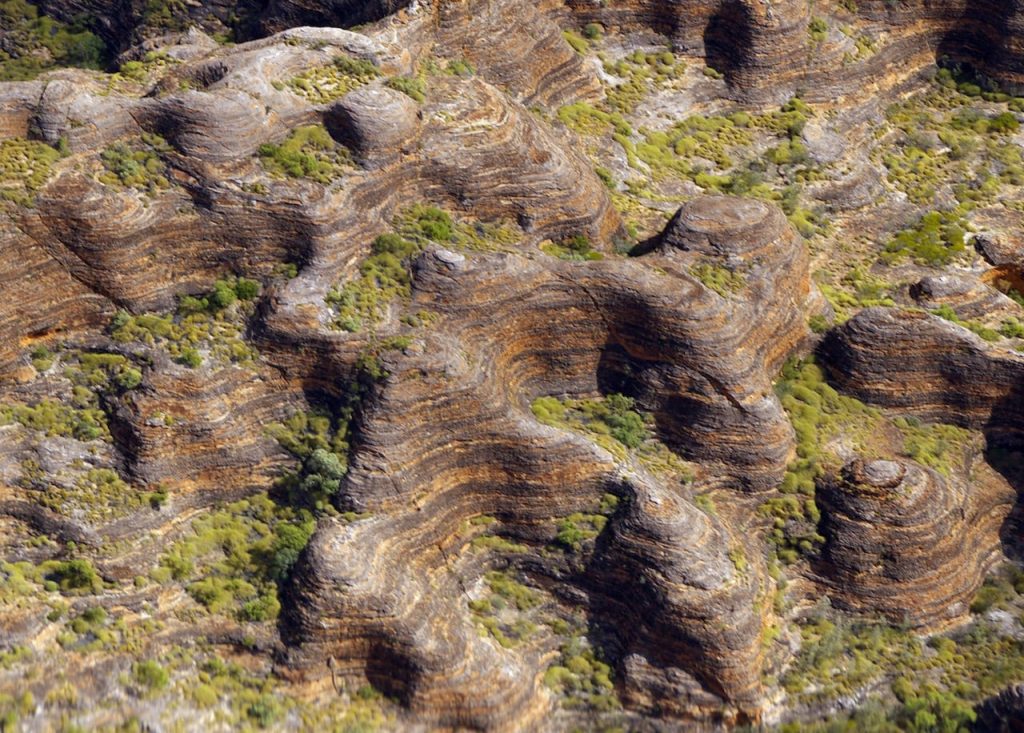
Day two is all about Cathedral Gorge. It’s the highlight. Our group walks along Piccaninny Creek’s smooth grey rock bed with its avenue of beehives, veering off to a sandy creek bed to enter the gorge. The winding passage is strikingly beautiful, towering walls of golden rock, glimpses of more behind, reflective water pools, ledges and potholes and giant slabs of broken-off rock marking huge waterfalls.
Nothing prepares for the grandeur of this stupendous natural amphitheatre. Entering this cathedral today is akin to a thirteenth century peasant’s awe entering Chartres Cathedral. We sit at the far end under the rocky hood looking back to the nave over the altar of a small pool. All this; created by unimaginable torrents of water. Out of the light a group of ant-size people walk around the white sandy perimeter and start to sing – a joyous test of the acoustics. It’s a reminder that the Sydney Symphony Orchestra performed here. For most it’s a time for personal reflection, the power of nature, and the smallness of humans.
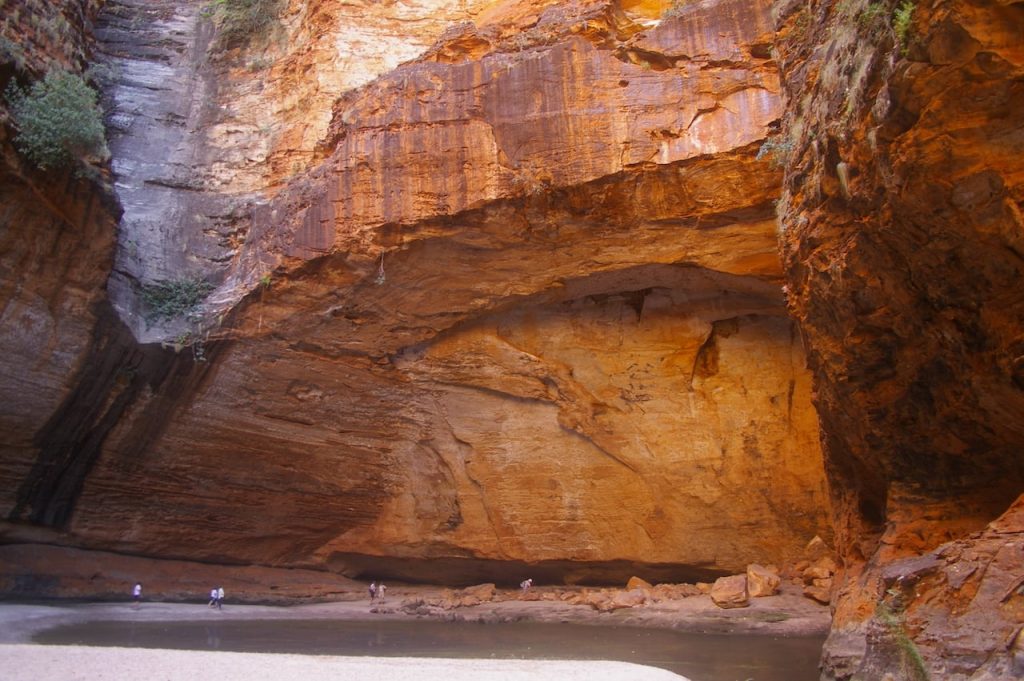
Our return via Domes Walk provides the best views of these beehive structures, whether it’s close up, in clumps, distant placements or angled vistas. There are curious weathered shapes of heads and elephants. Whenever the hardened casing is broken, whatever colour the band, out pours pure white sand.
Low sweeps on our homeward flight reveal more of this tiger-striped massif that adds scale and context to my walks within it. It’s sunset and it’s aglow. From the ancient to the recent, we circle the man-made crater of Argyle diamond mine and cross the artificial sea of Lake Argyle before landing in Kununurra.
The East Kimberley is a wild wilderness of great beauty yet to be discovered by the world’s tourists. It doesn’t matter what you call it, if you come here, you must visit the Bungles.































